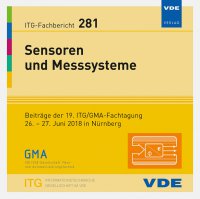Automated system for measuring the radial clearance of rolling bearings
Konferenz: Sensoren und Messsysteme - 19. ITG/GMA-Fachtagung
26.06.2018 - 27.06.2018 in Nürnberg, Deutschland
Tagungsband: Sensoren und Messsysteme
Seiten: 4Sprache: EnglischTyp: PDF
Persönliche VDE-Mitglieder erhalten auf diesen Artikel 10% Rabatt
Autoren:
Meier, Nicolas; Papadoudis, Jan; Georgiadis, Anthimos (Leuphana Universität Lüneburg, Institut für Produkt- und Prozessinnovation (PPI), Volgershall 1, 21339 Lüneburg, Germany)
Inhalt:
Most of the bearing positions are designed with rolling bearings. Usually rolling bearings are manufactured with a certain “bearing clearance”. Bearing clearance is defined as the total distance through which one bearing ring can be moved relative to the other in the radial direction (radial clearance) or in the axial direction (axial clearance). The radial clearance of a bearing is of considerable importance if reliable operation expected. Correctly installed rolling bearings increase the lifetime and cause less energy loss. In case of radial rolling bearings with a tapered bore, which are fastened on the shaft with an adapter sleeve, the radial clearance is reduced during the process of mounting. There are known measuring devices, that allow to check the radial clearance fully automatically in the uninstalled state. Methods for checking the radial clearance in the installed state are known as well. The simplest method is the use of feeler gauges. Even simple measuring devices are known where the bearing is turned by hand and the radial clearance is read manually via a dial gauge. The measurements of these methods are sometimes subject to large fluctuations because each assembly operator is not performing the task exactly the same – human variation. The intent of this work is to develop a method for measuring radial clearance during the assembly process. The measurement result should be reproducible and not influenced by the assembly operator’s natural variation while performing the task. For this reason, a measuring device was developed. The radial clearance can now be measured before, during and immediately after the process of mounting bearings with tapered bore which are fastened on the shaft with an adapter sleeve. The measurement is performed automatically and the measured data is directly logged - specifically for each individual bearing. By developing an intelligent algorithm that adapts to different bearing configurations, the metrological determination of the test load became unnecessary. The trend of the test force was abstracted by a mechanical model and the characteristic curve correlated with the bearing clearance. Thus, the sensor technology originally required for this could be replaced by an intelligent software system. The system that was developed can be incorporated into the quality control system of a rolling bearing manufacturer. It should also be used as a standardized method for checking the radial clearance of bearings after the assembly process.


